Today, it is going to be all about chicken poo. Not the best topic out there. I know.
However, it is a topic that chicken handlers need to face. So, without further ado, here is the complete guide to chicken poop: what’s normal and what’s not?
Let us get down and dirty.
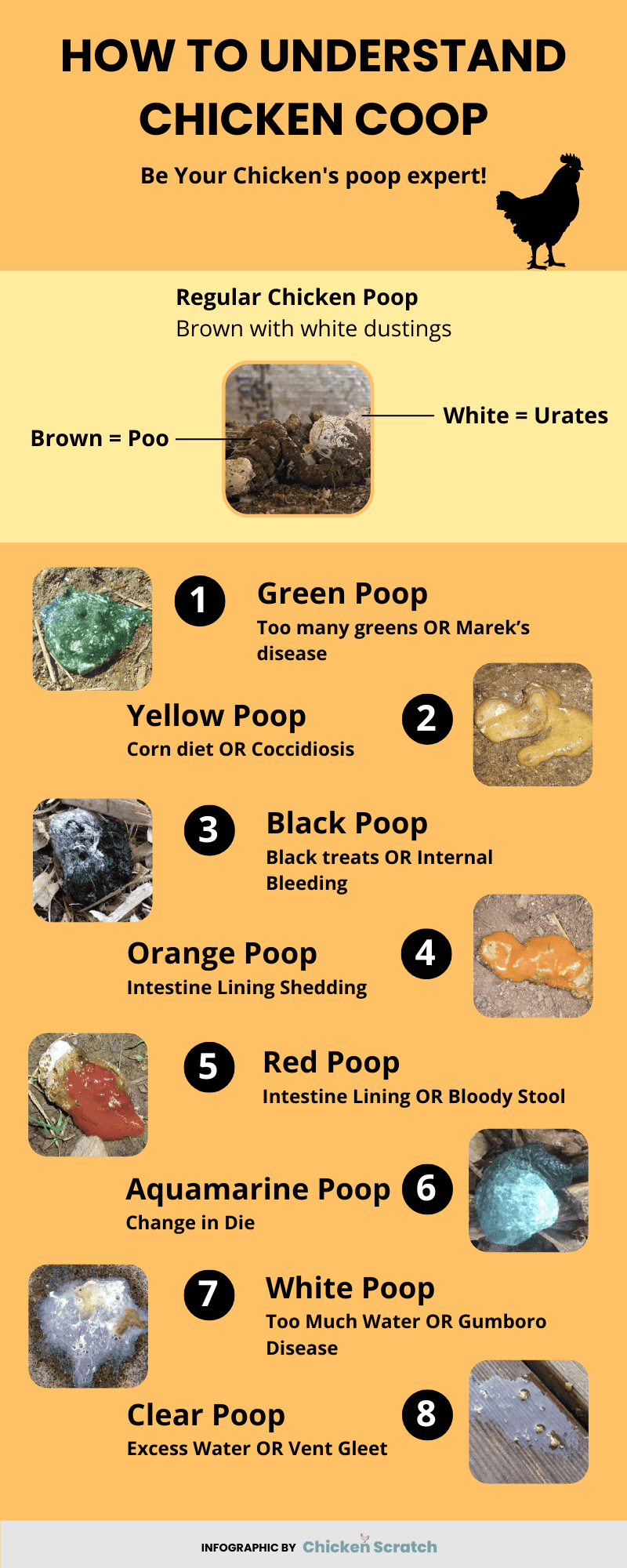
Why Talk About Poop?
If we have to talk about output, there is no doubt that it is more fun to talk about eggs. However, to make sure our egg layers are happy and healthy, we have to monitor their poop as much as we track their eggs.
Chicken poop is not the most appealing thing to look at, but it tells us a great deal about our chickens. In a way, it helps us monitor their health.
There is a wide range of illnesses and diseases that chickens can face. Unfortunately, unlike humans, chickens cannot tell us when they feel ill.
Sometimes, we find out our chickens are sick through their poop. Not the most enjoyable task, but we have to do it for the chickens.
What’s Normal and What’s Not?
Poop monitoring is not fun. Unfortunately, it is also not easy.
Chicken poop comes in all shapes, sizes, colors, and textures. More often than not, telling what is natural and normal is not that clear-cut.
There are many types of chicken poop. Most of it should not get you worried. They are different, but not a reason to call the vet.
Regular Chicken Poo
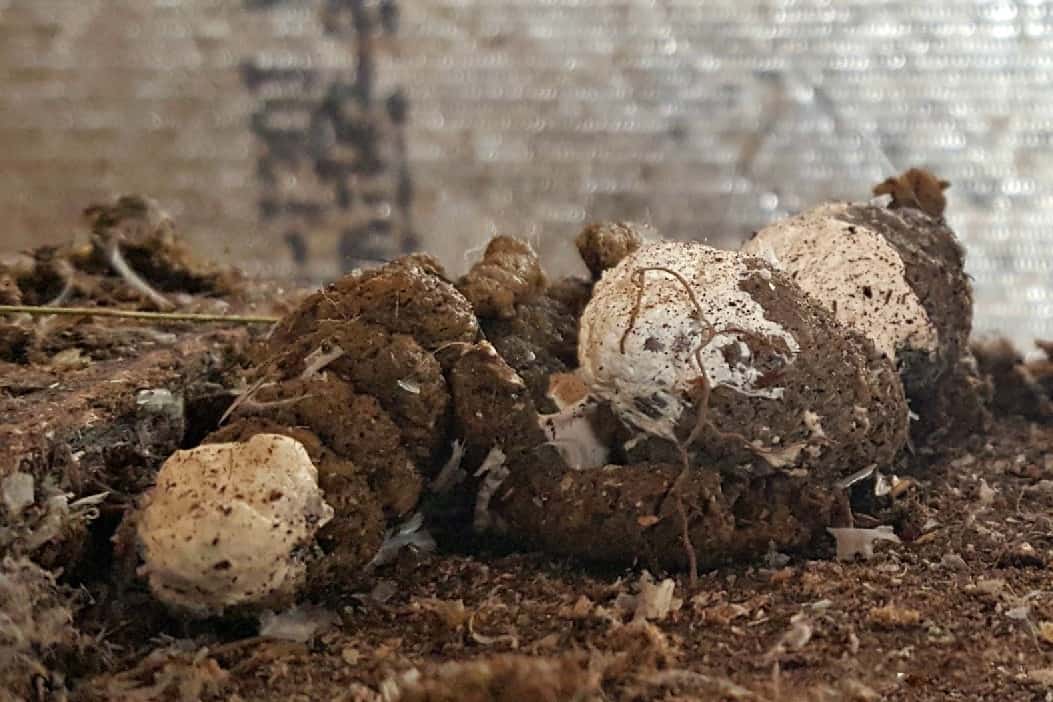
Regular chicken poo is brown in color and somehow solid in texture. It also has white dustings here and there. The brown part is the poo, and the white part is the urates.
Chicken droppings, as described earlier, are usually brown and somewhat solid in texture with white dustings, which are the urates. They may have a strong smell due to the ammonia content within the droppings. Some of the features you may notice are white and black particles which indicate digestible proteins and indigestible items in their diet such as grass seeds.
The shape, appearance, texture, and color can vary depending on the diet; however, chicken feces will look like small round discs or rods made of a squishy material that might break apart if handled too roughly.
Cecal Droppings
The cecum of a chicken is a part of its digestive tract, located in the large intestine, so its droppings would typically look like a soft, semi-solid mixture of solid waste and partially digested food material. As for color, they can range from light yellowish colors (often with bits that are slightly more green-tinged) to black.
In terms of scent, chicken cecal droppings are often described to smell extremely pungent than their chicken’s normal droppings. Don’t worry! This is normal and a sign that your chicken’s digestive tract is working well.
Their texture can vary from moist “runny droppings” to dry and solid pieces with variable sizes between different breeds of chickens. Unlike normal poop, this type of dropping is expelled more rarely.
Color
Chicken poo can surprisingly be colorful.
As we have said earlier, it is not clear-cut what is normal or not with chicken poo. Below, we will offer a few explanations for the different poo colors. Some would be relieving to know. Some, well, not so much.
| Poop Color | Possible Causes |
| Green | Marek’s Disease |
| Yellow | Coccidiosis |
| Black | Internal Bleeding |
| Orange | Intestine Lining |
| Red | Intestine Lining
Blood |
| Aquamarine | Change in Diet |
| White | Gumboro Disease
Too Much Water |
| Clear | Vent Gleet
Too Much Water |
Green Poos

More often than not, green poo means your chickens have had way too many greens. As you might already know, many chicken treats are green. If they have been munching on some greens, then there is no reason to worry.
On the other hand, you still need to keep an eye out for green poo. It could mean serious diseases such as Marek’s disease. Read more about this disease here.
Yellow Poos
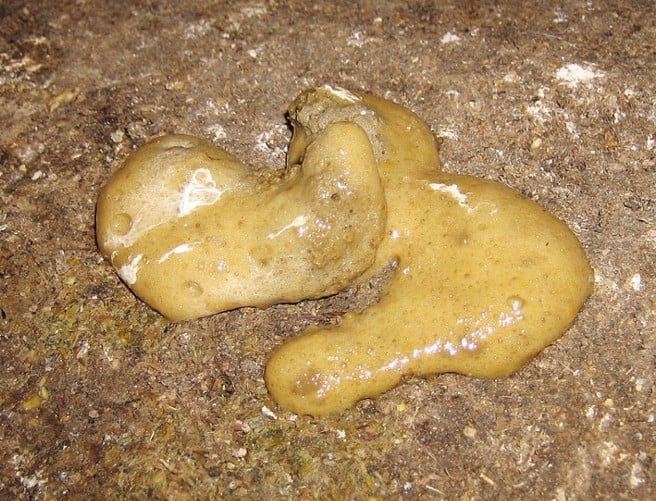
Again, yellow poo could be because of the diet of your chickens. Corn could cause your chickens to bring out yellow droppings.
On the other hand, yellow poo could also be a sign of coccidiosis and other serious problems. You can read more about coccidiosis here.
Black Poos
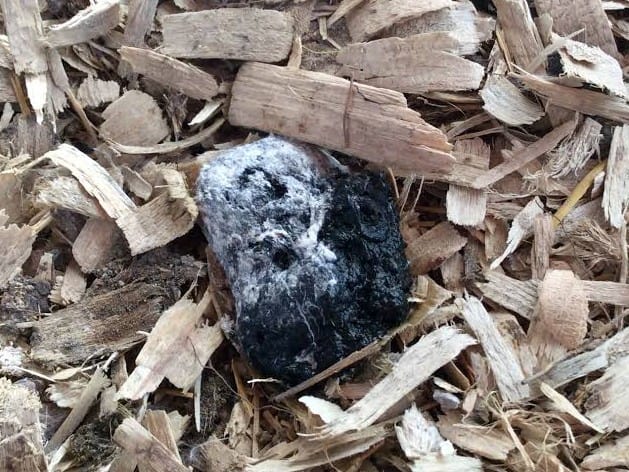
Too many black or purple treats could cause chicken droppings to turn black. On a more serious note, it could be a sign of internal bleeding.
Orange Poos
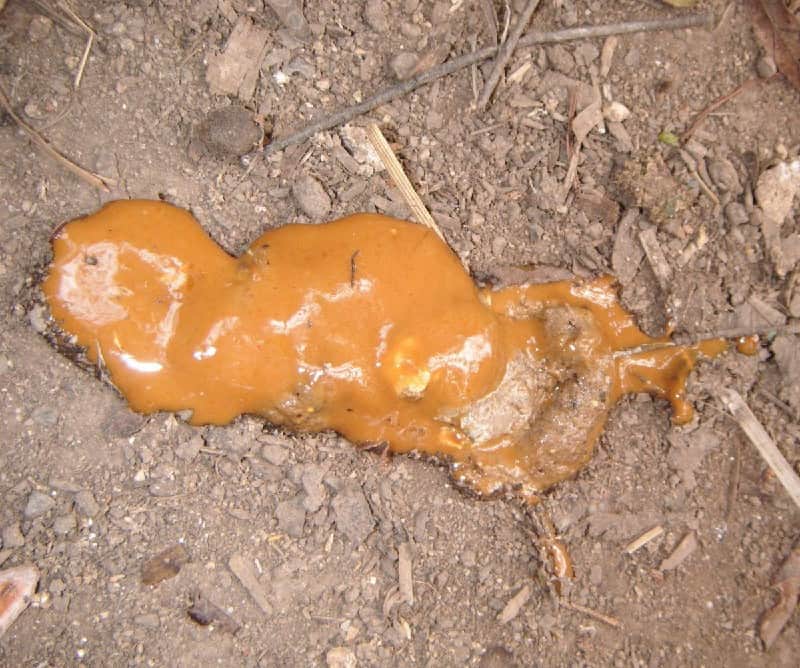
Orange poo has something to do with the intestines. It could be the shedding of the intestinal lining. It might sound like something concerning, but it is totally normal. Just make sure it’s not a bloody stool. As you will see in the next portion, that is not good news.
Red Poos

Now, red poos could also be a simple shedding of the intestinal lining. But you need to be extra careful of red poos, especially if it does not look like poo. Take a closer look. It might be bloody stool!
Unlike the other poos, bloody stool can never be good. More often than not, it means there is a problem.
Aquamarine Poos
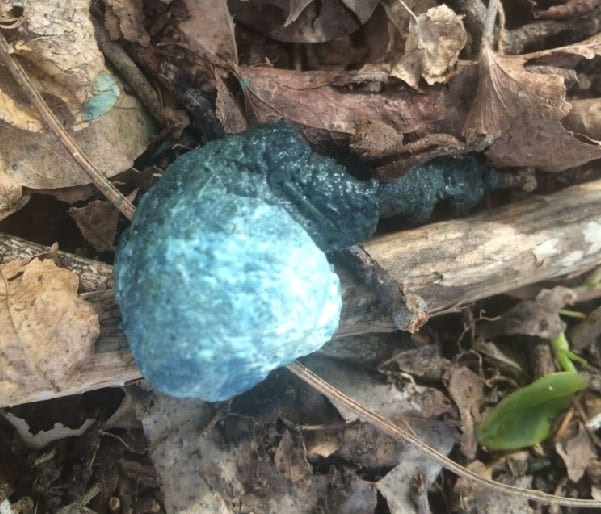
Yes, aquamarine poo exists. Unfortunately, no, your aquamarine pooping chicken is not one of a kind.
Hey, there is still a reason to celebrate! There is no reason to worry about aquamarine poo. Like with the other types of poo, it could be caused by their diet.
White Poos
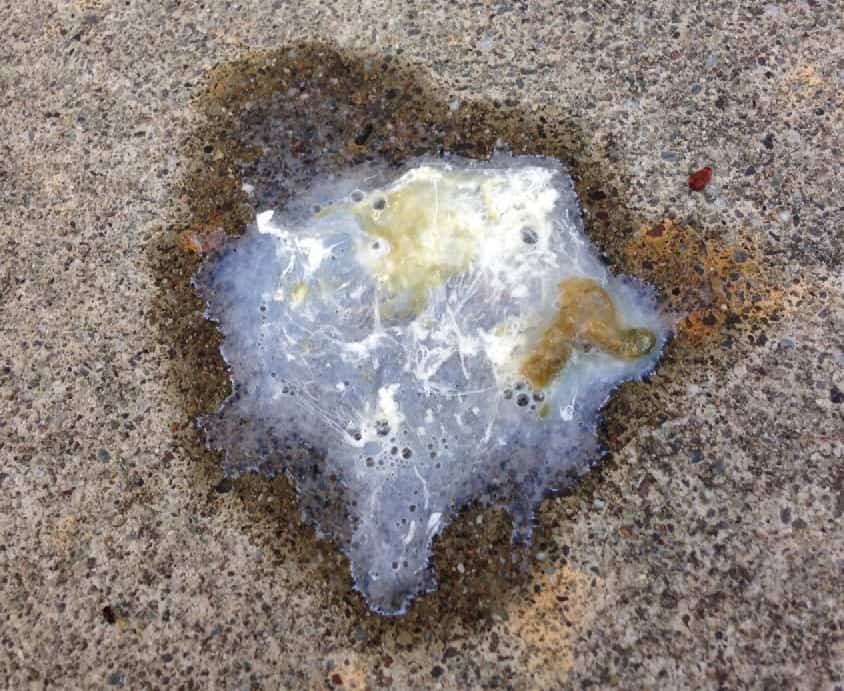
Earlier, we mentioned that the regular chicken poo has white dust on top. You might have to be worried if most of what your chicken pooped is white matter.
It could just be that your chicken has had too much water than usual. On the other hand, it could be more serious, like gumboro disease. Keep an eye out. Read more about this disease here.
Clear Poos

As you might have already guessed, clear poos could be a sign that your chickens have taken too much water. On the other hand, it could be that your chickens have vent gleet or other serious problems. Read more about vent gleet here.
Texture
Poo texture is another thing you can note when checking the poo of your chickens.
Runny or Watery Poos
As you might have guessed, watery poo might mean that your chicken has had way too much water than usual. Again, a runny poo could also be a sign of serious problems such as internal diseases.
Gloopy Poos
A gloopy texture might mean it is a cecal poop. It would smell rank, but it is normal. Do not worry about it.
Foamy Poos
A foamy poo could mean your chicken has diarrhea. It is not a good thing, but it is not the worst thing on the list either. A fast solution is a must.
Recommended
- Vent Gleet in Chickens: Identify, Causes, Treatment & Prevention
- 4 Common Chicken Diseases : Causes, Symptoms, Treatment, Prevention
- Coccidiosis in Chickens: Cause, Symptoms, Treat and Prevention
Size
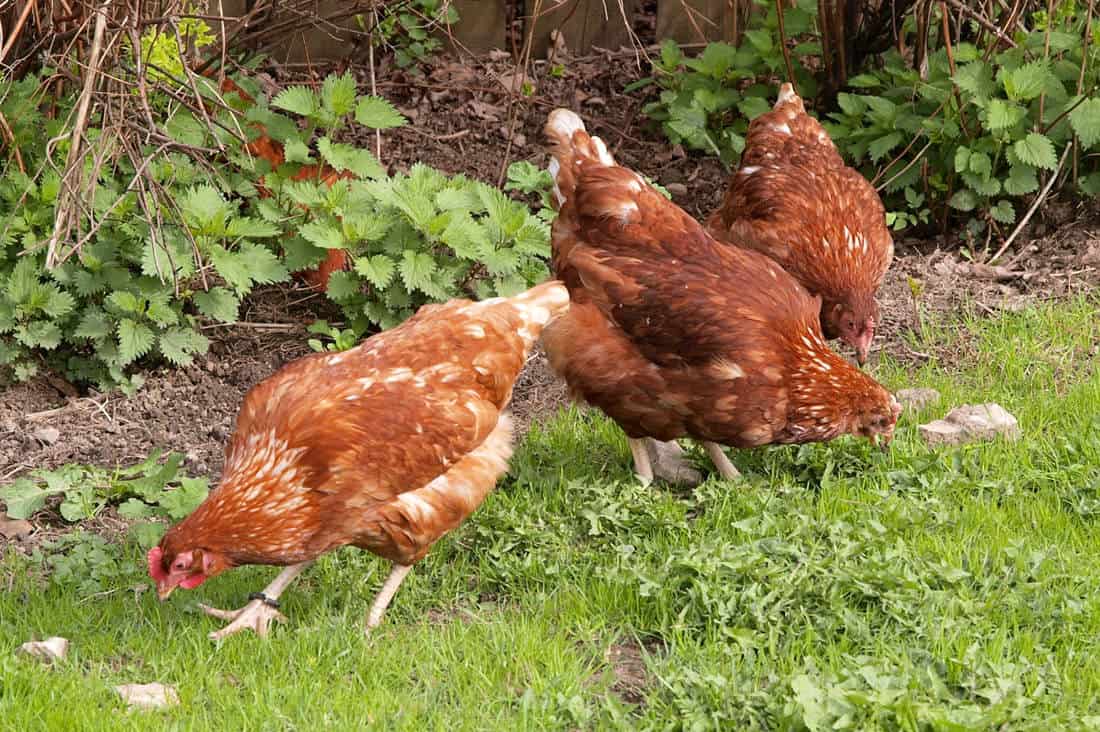
Big Poos
At some point, you will come across a large and stinky pile of poop from one chicken alone. It will smell bad, but you should not worry about it. It is most probably a broody poop.
When a broody hen insists on sitting on her eggs instead of doing her usual routine, she will hold that poo. She will only stand a few times a day to eat, drink, and poo. As you can imagine, the poo will pile up while she is sitting. In turn, it would usually be a big pile of poo when she lets it out.
The Wormy Poo
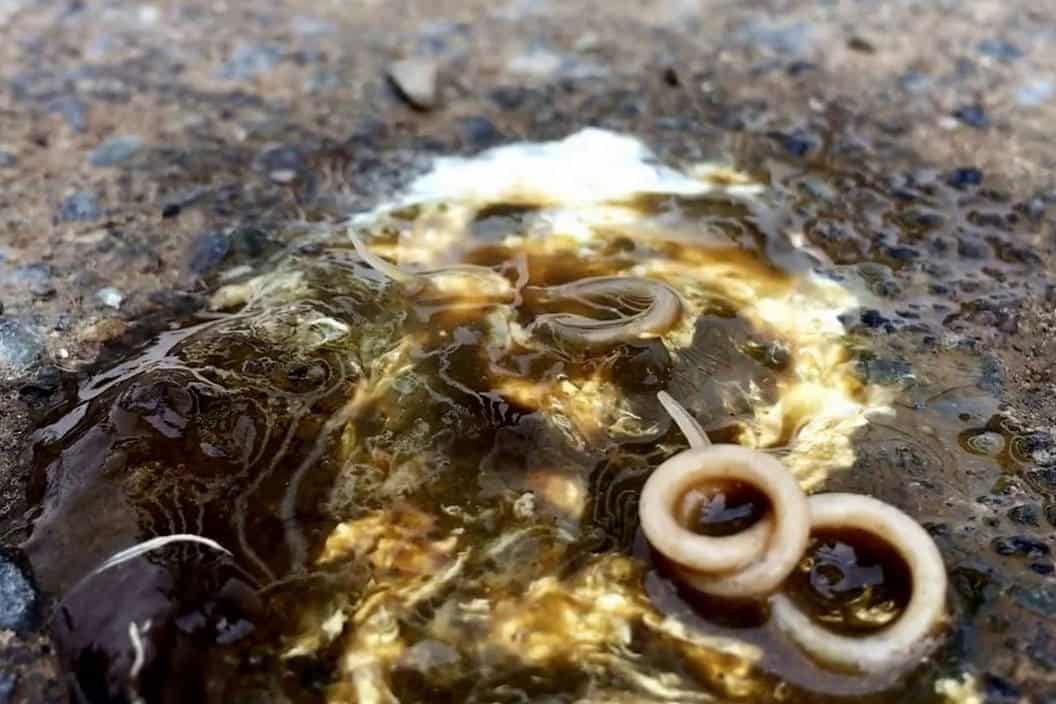
There is one poo that is absolutely dangerous.
Most of the poos we have talked about could be indicative of something benign or malignant. It is a different story when it comes to a poo that has worms. You should worry about this poo! It means something dangerous. Additionally, your whole flock might have an active infestation too.
Confirming Suspicions
As you have seen, it is not easy to monitor the health of your chickens base on their poop alone. To confirm suspicions, you should also check other angles:
- Diet– Check the diet of your chickens. What goes in your chickens has a high chance of affecting their stool. If they have been feasting on greens lately, the green-colored poo should not be surprising. On the other hand, if they have not consumed many green treats recently, that might be a good reason to start worrying.
- Appetite– If the poo of your chicken has consistently been different from usual, you might want to check their appetite as well. Take note if your chicken has been eating less or more than usual.
- Activeness– If your chicken is usually active and suddenly turned lethargic, then that is a good sign that there might be something wrong.
- Egg Production– Have they been giving fewer eggs or weird eggs (e.g., shell-less eggs)? That is also a good indicator that something is up.
If you are still not sure, do not hesitate to consult a vet. It is better to be safe than sorry.
Treatment
You will see many treatments for all kinds of chicken diseases and problems on the net. We do not suggest following most of these treatments without consulting a vet, particularly if it includes giving chickens medication. It could be more harmful than helpful in the long run.
With that said, the following suggestions we will show you are not really treatments per se. If your chicken is not sick, the following suggestions should turn the poo of your chicken back to the regular:
- As we have said earlier, what goes into your chickens has a lot to do with their poo. Do you see the poo of your chicken turning into a different color or consistency than usual? You might want to examine what they have been eating. After that, you might want to limit their intake of that food.
- Lessen the protein intake of your chickens. Too much protein could cause black or clear poo.
- Try to get rid of stressors. Stress can also be a factor to note when it comes to chicken poo. Stress can cause white or clear poo.
If the problem persists after making these adjustments, then it might be time to consult a vet.
Summary
And that is the complete guide to chicken poop: what’s normal and what’s not?
Chicken poo is not the loveliest topic out there. Still, poo monitoring is a task that chicken handlers brave for their little critters.
As we have seen, chicken poo comes in all different forms. Some may have a different color or texture, but it should not worry you. On the other hand, others look bad and really do have a terrifying underlying cause.
There are several things we could do to make the problem go away. Proper management of their diet is one. On the other hand, medication is not always advisable, especially without vet consultation.
Now that you know your way around chicken poo, it is time to get down to business!
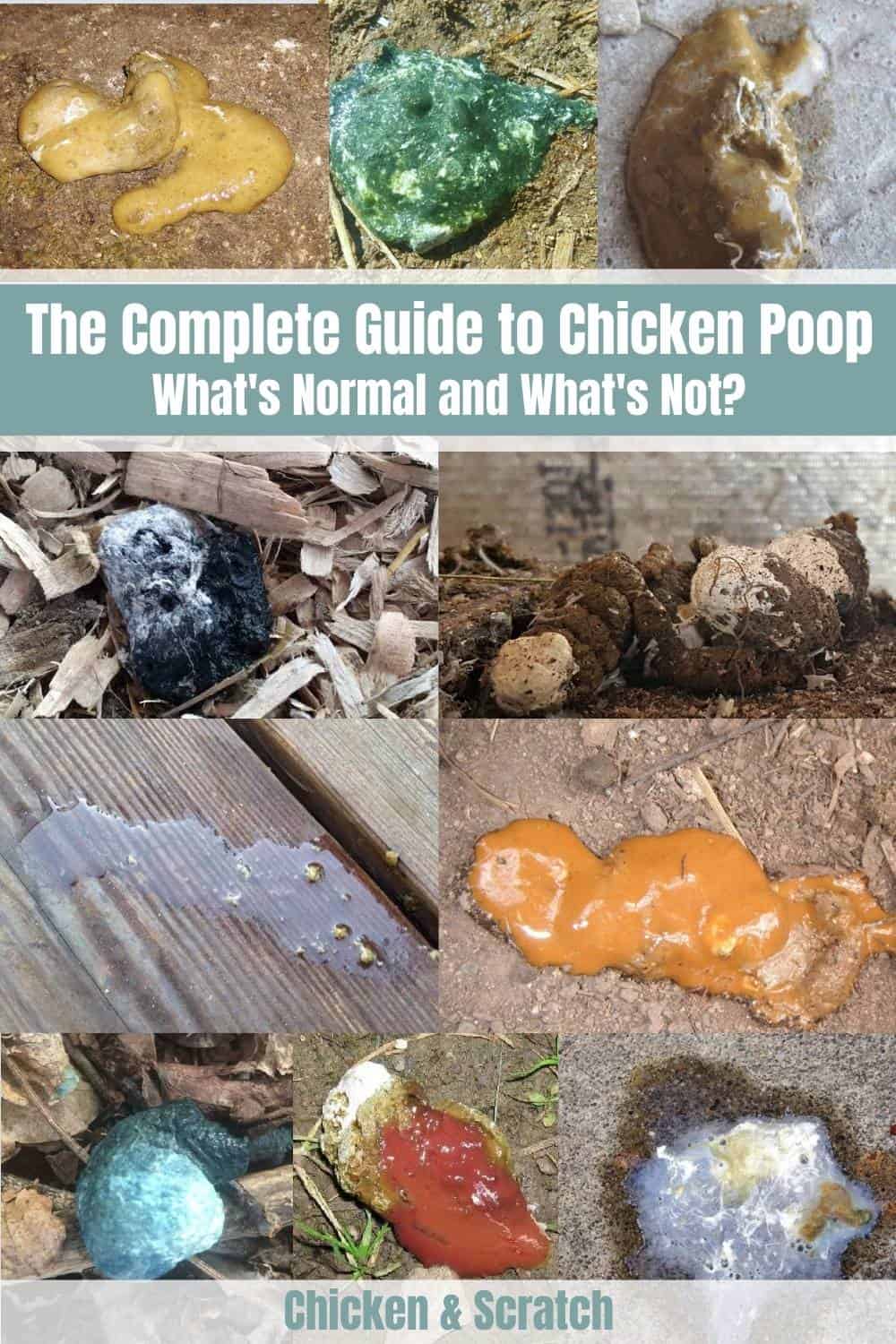

Joseph Hudson has been raising chickens for over 15 years. In 2018, he completed the Agriculture & Natural Resources program at Mt. San Antonio College. He currently raises over 1400 chickens on his 7.5-hectare farm. He keeps sharing his experience on raising healthy and happy chickens on Chicken Scratch The Foundry.








Hi,
I was hoping you would have the colour of one of my chickens poos in your photos but you don’t.
The colour of urates in her poo is yellow!! Everyone else’s is white, normal.
Her appetite is good, full crop but she is losing a lot of weight!
I do give them a couple of handfuls of corn every day and some bread for a treat, otherwise they eat grain and they free range.
Thanks Christine